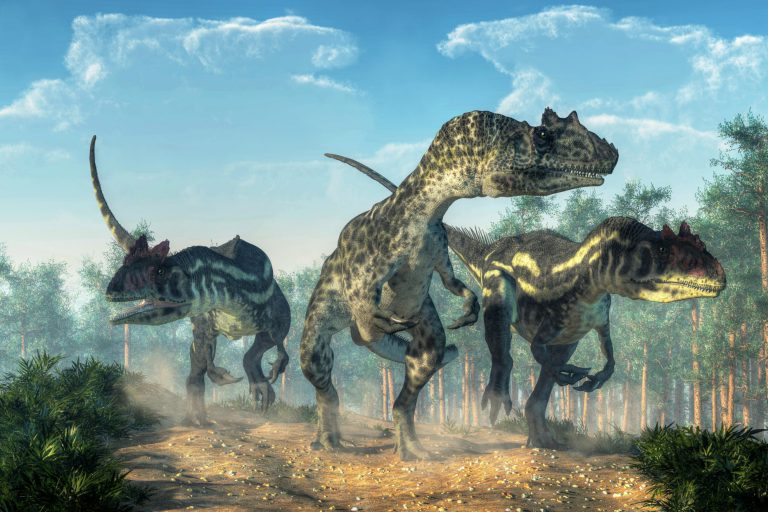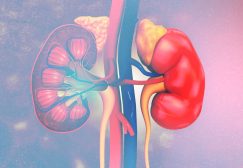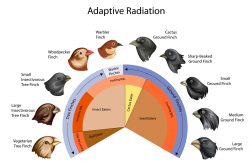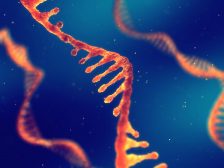The Dinosaurs

An artist’s depiction of three allosauruses on the prowl
Table of Contents
Everyone has heard about the dinosaurs. No doubt one of the reasons why is because of their size, another being the fact that they ruled the Earth just like humans do now. In the grand scheme of things, dinosaurs represented a major turn in the evolutionary development of organisms on Earth.
Dinosaurs, the Greek word meaning terrible lizard, were the most advanced reptiles of all time, due to the fact they were allowed to occupy as many ecological niches as they could without much competition in any form. Literally, the sky was the limit.
Although the sky was the limit, it is thought that the original dinosaurs were of very similar nature to that of the early reptiles mentioned on the previous tutorial page. Over time, these organisms slowly moved away from moving with 4 feet to 2 feet, essentially bipedal motion.
The Triassic Period
The first distinct dinosaurs occurred within the beginning of the Triassic Period, named after this occurrence. Two distinct types of dinosaurs had evolved, some that were bird-like and some that were reptile-like. Within these two categories, dinosaurs further diversified to become carnivores, herbivores or indeed omnivores. The main fact to heed is that the dinosaurs evolved and diversified at an amazing and effective rate, to the extent that they ‘ruled the world’.
The most notable thing about these organisms is their size, they were huge compared to any other organism that had preceded them. This had an obvious selective advantage, particularly in the form of sheer bulk and power. The herbivores were also tall enough to graze on the top of trees, which were rarely taken advantage of as a source of food by organisms of the time, purely because they could not reach the top of trees.
The Jurassic and Cretaceous Periods
Essentially, the dinosaurs continued to evolve, and in some cases became bigger and stronger, such as Tyrannosaurus rex, the largest carnivore on Earth at the time. The Jurassic period also witnessed the emergence of the pterodactyl, a pentadactyl digitate organism that ruled the skies.
A balanced relationship would have occurred between the dinosaur herbivores and carnivores. The relationship between them, their relationship between other organisms, their relationship with the environment and the movement into new environments would all be under the influence of natural selection in the long run.
While the dinosaurs ruled the Earth, a competitor was emerging, the ancestors of the Mammalian species, of which, man belongs to.
Dinosaur Extinction
No one truly knows how the dinosaurs became extinct, but the fact is they disappeared and a whole host of ecological niches were made available to other organisms, who could harness the resources of these niches due to the absence of competition (and predation) by dinosaurs.
The dinosaurs disappeared around 65 million years ago, with many other land-dwelling organisms also dying out around this time. Regardless of what killed off the dinosaurs, it was comprehensive. The general consensus is that a major geological event killed off many of the land-dwelling organisms, particularly the larger ones.
This would have caused an overall drop of biomass on land, and therefore ‘less food to go round’ all the organisms that occupied dry land. Also, many food chain relationships would have been disrupted, causing a gradual breakdown of populations in the long term, sometimes leading to extinction, essentially survival of the fittest.
Summary of Life
Insects, due to their size, were adaptable and already diverse, meaning that at least their short term survival and close relationship with plants (at the bottom of any food chain) was secured
Marine life was still plentiful, and diversifying, while mammals were emerging to be the next dominant force on planet Earth.
Birds were also diversifying, and taking advantage of their proportionately larger body in comparison to insects, alongside their ability to fly.
On the other hand, mammals were specializing on land, and trees, which we further investigate on the next tutorial…
You will also like...

Physical Development in Humans
This tutorial elaborates on the physical development of humans, particularly from puberty to adulthood. Read this tutori..

Kidneys and Regulation of Water and Inorganic Ions
The kidneys are responsible for the regulation of water and inorganic ions. Read this tutorial to learn about the differ..

Adaptive Radiation
The diversification of several new species from a recent ancestral source, each adapted to utilize or occupy a vacant ad..

Sensory Systems
A sensory system is a part of the nervous system consisting of sensory receptors that receive stimuli from the internal ..

The Water Cycle
The water cycle (also referred to as the hydrological cycle) is a system of continuous transfer of water from the air, s..

Protein Synthesis
Part of the genetic information is devoted to the synthesis of proteins. mRNA, a type of RNA, is produced as a transcri..
